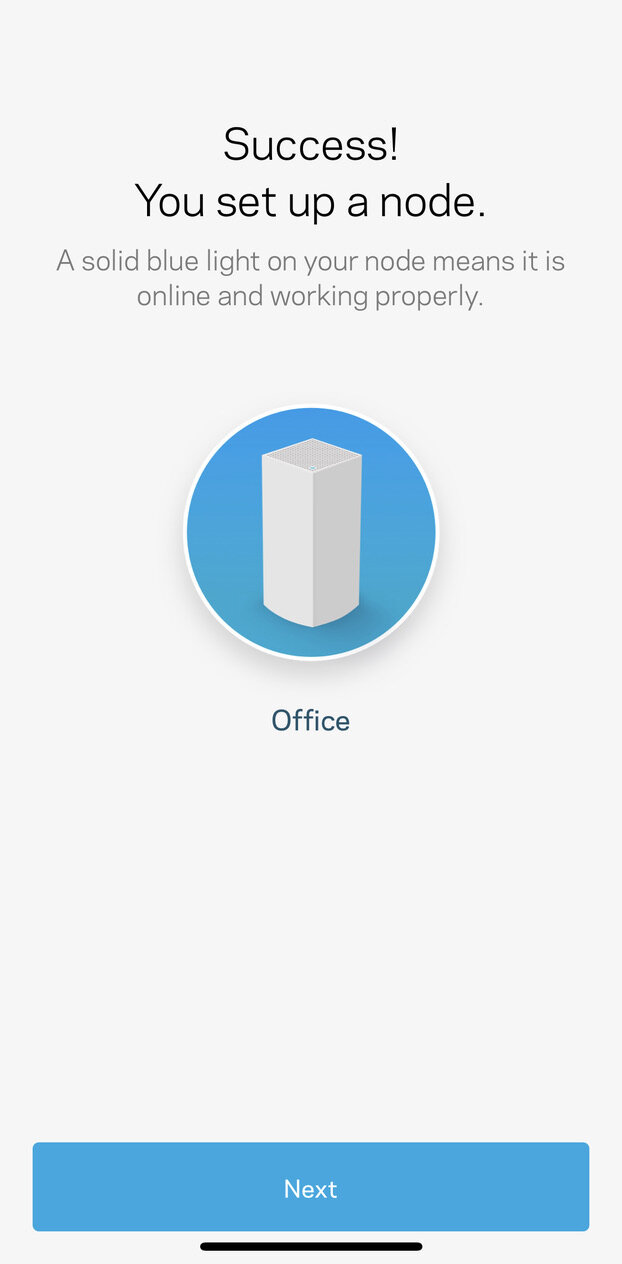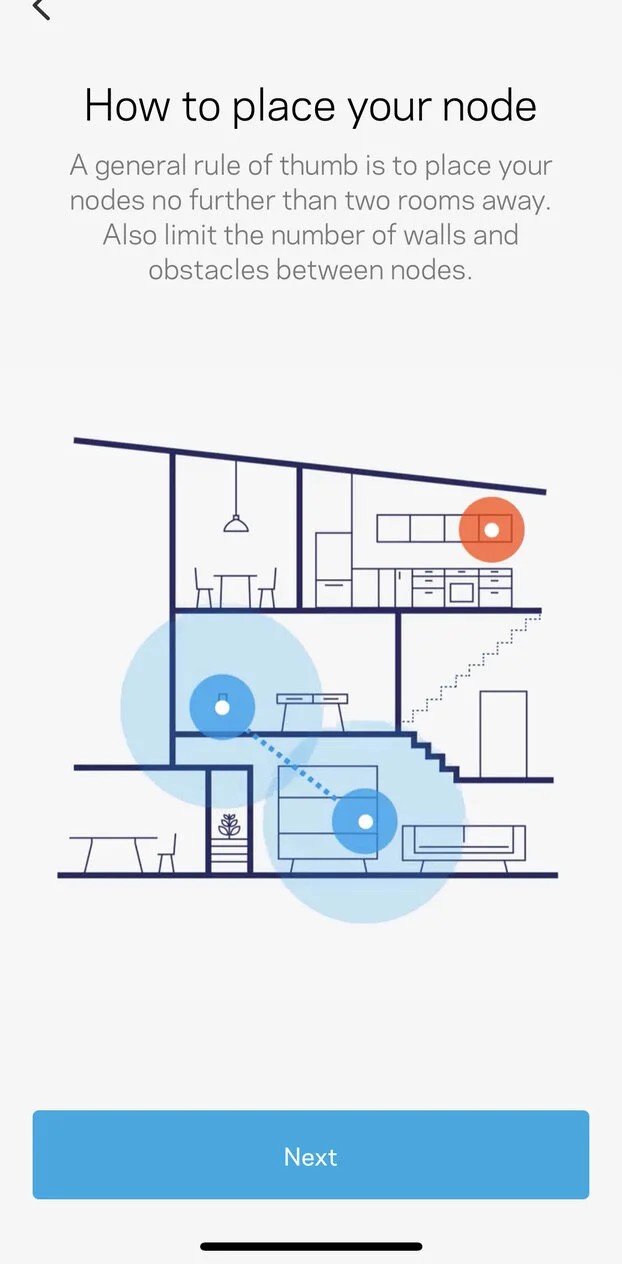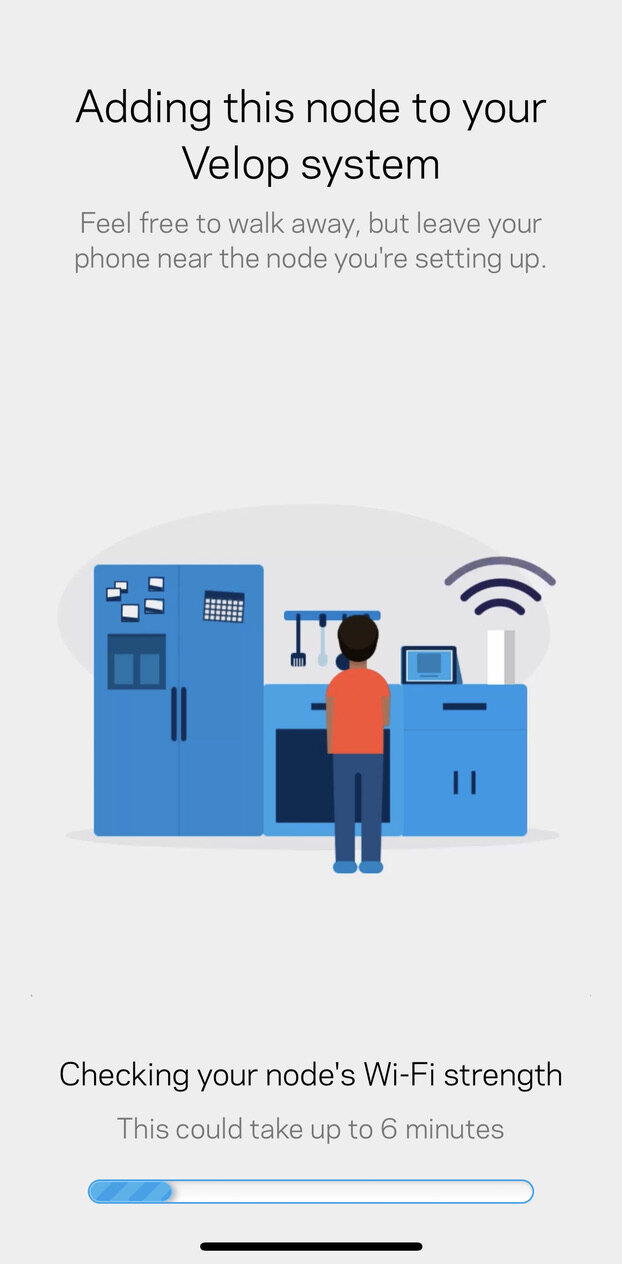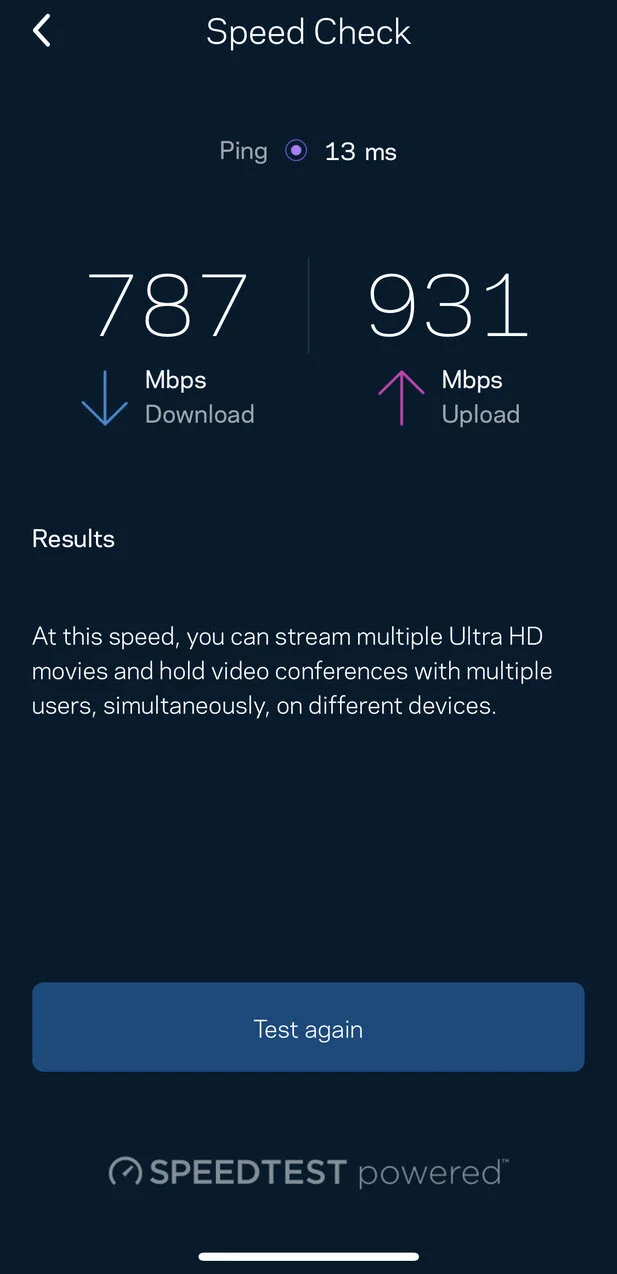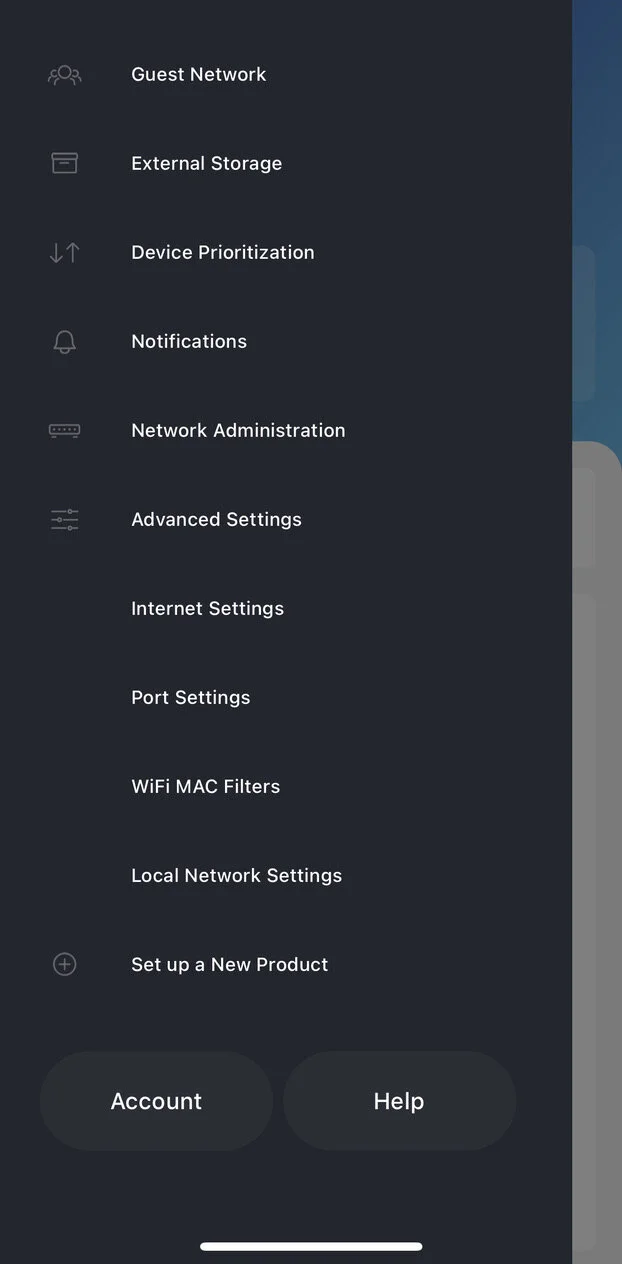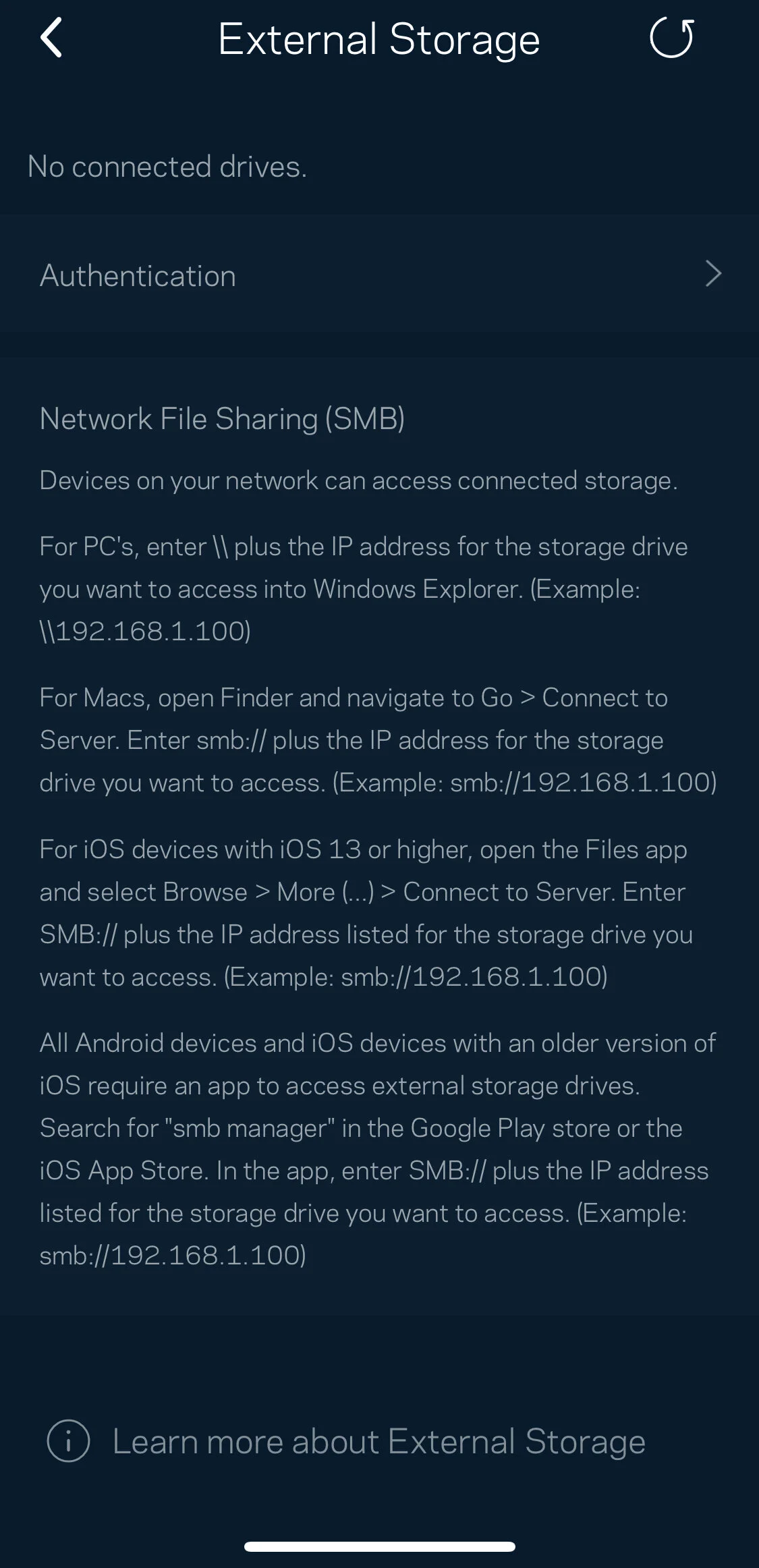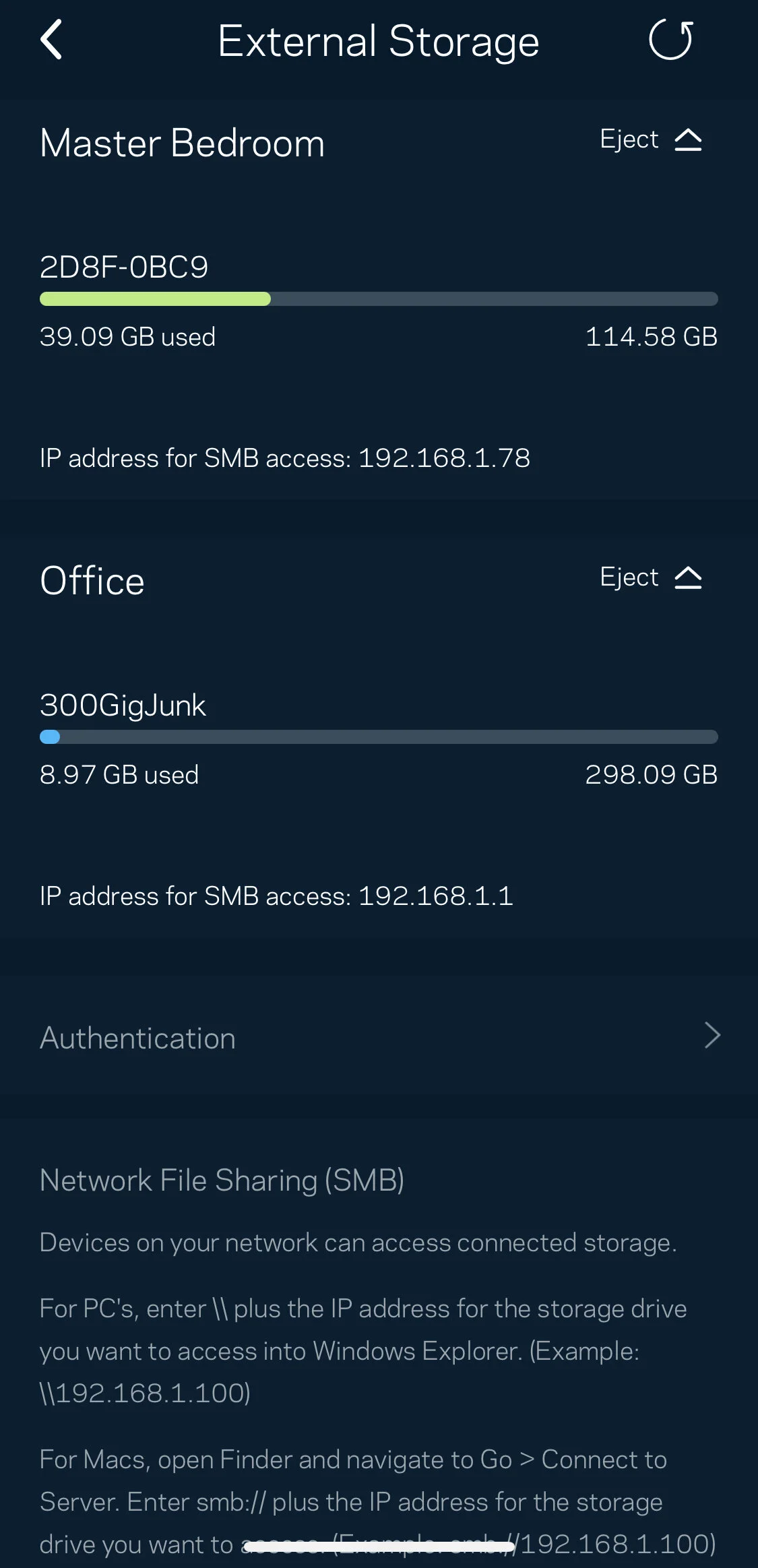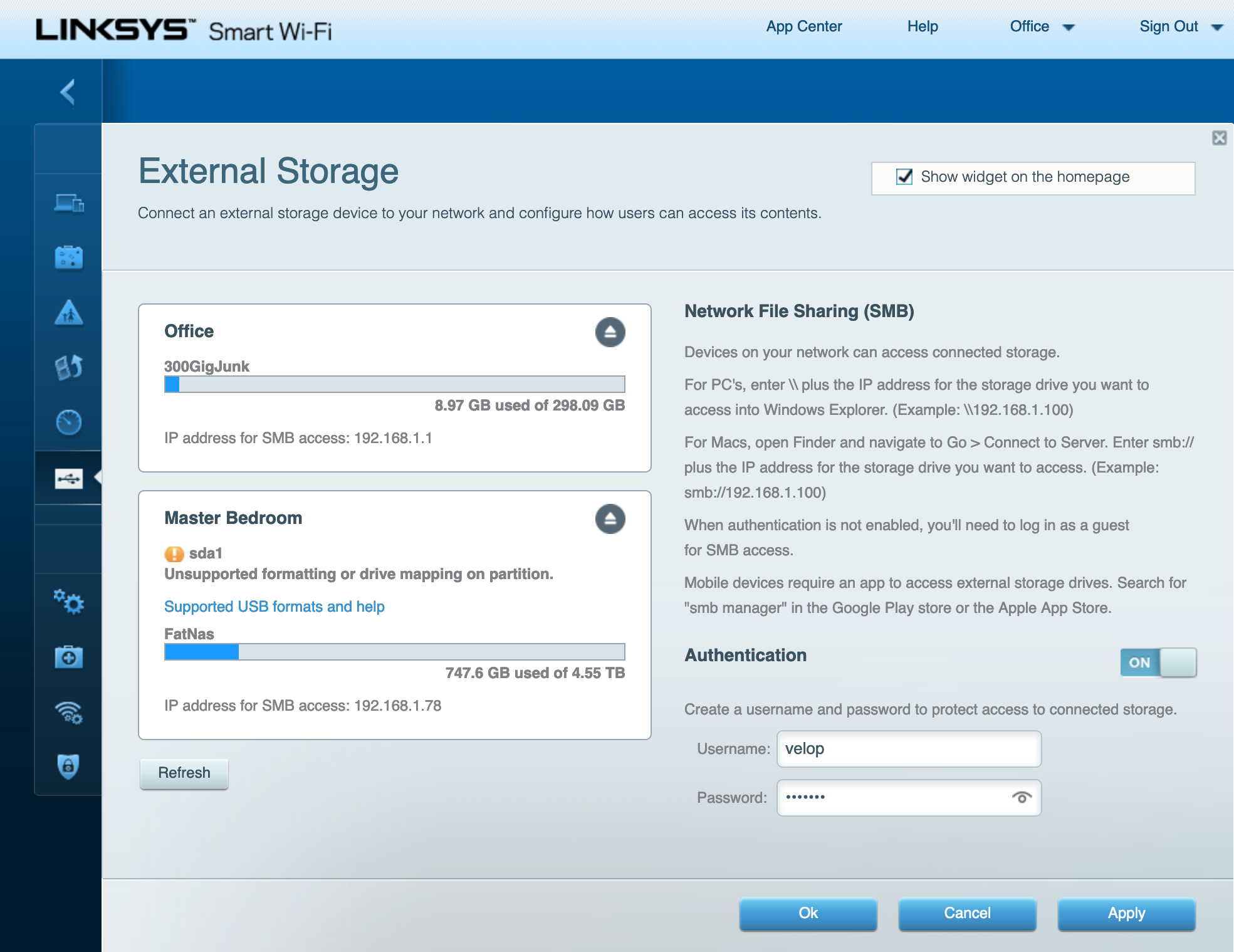Linksys Velop MX10 Review: Fast and Dumb
Originally Posted: February 8th, 2021
Linksys Velop MX10 Review: Fast and Dumb
Velop’s Confusing Wi-Fi 6 Lineup
Linksys has two different models of Wi-Fi 6 Mesh routers, the AX4200 and the AX5300. You can buy the units individually or part of a 2-piece or 3-piece kit. From there, it gets a little confusing.
Linksys uses both MX5 and AX5300 to refer to the same model. They also refer to these models differently if they are part of a multi-unit kit. The kit with three AX4200 units is the MX12600. The kit with two AX5300/MX5 units is the MX10600/MX10. They also have multiple dual-band and tri-band Wi-Fi 5 systems still available. If you’re confused, you’re not alone.
The Linksys Velop MX10 kit, which includes two identical MX5/AX5300 units.
To keep things simple, I’m only going to refer to the individual Wi-Fi 6 Velop models. The AX5300 came out in early 2020, and is a tri-band mesh router with two Wi-Fi 6 radios and one Wi-Fi 5 radio. The AX4200 is also a tri-band mesh router. It came out later in 2020, stepped down in a few specs, but features Wi-Fi 6 across all three radios. This review focuses on the AX5300/MX10, but it’s worth looking at the differences between the two.
Velop AX4200 Key Specs
Wi-Fi Radio Specs:
Tri-band (2.4 GHz, 5 GHz, 5 GHz)
2.4 GHz: 2x2 Wi-Fi 6, up to 600 Mbps
5 GHz: 2x2 Wi-Fi 6, up to 1200 Mbps
5 GHz: 4x4 Wi-Fi 6, up to 2400 Mbps
Up to 80 MHz channels (no 160 MHz support)
Ports: 3 Gigabit LAN + 1 Gigabit WAN + 1 USB 3.0
Processor: 1.4GHz Quad Core
Flash Storage: 512MB
RAM: 512MB
Dimensions: 4.5" x 4.5" x 9.6"
Weight: 2.08 lbs
Velop MX5/AX5300 Key Specs
Wi-Fi Radio Specs:
Tri-band (2.4 GHz, 5 GHz, 5 GHz)
2.4 GHz: 4x4 Wi-Fi 6, up to 1147 Mbps
5 GHz: 4x4 Wi-Fi 5, up to 1733 Mbps
5 GHz: 4x4 Wi-Fi 6, up to 2400 Mbps
Up to 80 MHz channels (no 160 MHz support)
Ports: 4 Gigabit LAN + 1 Gigabit WAN + 1 USB 3.0
Processor: 2.2 GHz Quad-Core
Flash Storage: 512MB
RAM: 1GB
Dimensions: 4.5" x 4.5" x 9.6"
Weight: 3.5 lbs
Velop AX4200 vs AX5300
The biggest difference between the AX4200 and AX5300 is the number of spatial streams and the Wi-Fi standards they support. The AX4200 features less overall spatial streams, but supports Wi-Fi 6 on all three radios. The AX4200 also features one less Ethernet LAN port, a slower processor, and half the RAM of the AX5300. The AX5300 uses a trick that a lot of manufacturers have used, upgrading only some of the radios to Wi-Fi 6.
They’re both big, at nearly 10 inches tall. The overall design and hardware quality is OK, which is good because their size makes them hard to hide. Also worth noting: the power adapter is a large wall wart, and can cover multiple outlets on a regular power strip.
The difference in real-world performance between the AX4200 and AX5300 isn’t much, but sneaking in an older radio into a Wi-Fi 6 model just feels wrong. A lot of people will see the higher numbers in the AX5300 and incorrectly assume it’s a big upgrade over the AX4200. They’re more equivalent than the numbers would suggest, and I’d suggest purchasing the one you can find a better deal on.
The good news is that both models feature a 4x4 Wi-Fi 6 radio, supporting fast 5 GHz performance to multiple devices at once. There will be some differences between the two in backhaul performance, but I only have the AX5300 on hand to test with. Dong Knows Tech did a good review of the AX4200 if you’re interested in more details on that model.
Velop Setup, Mobile App, and Web Interface
The setup process for the Linksys Velop system is similar to most mesh Wi-Fi kits. The Linksys mobile app is required for initial setup, and you need to create a Linksys account. The mobile app guides you through the process of connecting your main gateway Velop, picking your basic Wi-Fi settings, and adding on any additional nodes.
Linksys App Settings and Features
The Velop web interface offers a few more settings, but not many.
The Linksys app looks pretty, but behind that pretty face is a limited set of features. Like most Mesh Wi-Fi apps, the Wi-Fi and network settings are limited. Mesh systems tend to hide most settings away from users and handle those themselves. In most cases this works OK, but if you are the type of person who wants control advanced settings, the Velop app will leave you disappointed.
With the Linksys App you can’t pick channel width, transmit power, enable or disable band steering or airtime fairness, or anything like that. The most basic functions are there though, including port forwarding, DNS/DHCP options, and a simple automatic QoS Linksys calls Device Prioritization. This allows you to pick up to three devices that will get priority.
Besides the lack of advanced settings, the Linksys app offers basic parental controls like pausing Internet access temporarily or on a schedule, and the ability to block specific websites. You can’t block categories of websites like you can with Deco Homecare. There’s also nothing like the ad blocking or security features included in the paid eero Secure subscription.
The Velop system also has a basic web interface, if you prefer to use a web browser to adjust settings. This can’t be used for the initial setup, but I found it to be a more reliable. The web interface also offers a few settings that aren’t in the mobile app, like band steering and airtime fairness. You still can’t control most aspects of your Wi-Fi signal like transmit power, band selection, or channel width. According to Linksys, that lack of control is a feature called Intelligent Mesh.
Linksys Intelligent Mesh: Tri-Band Dynamic Backhaul
Like most mesh routers, the Velop AX5300 leverages all of it’s radios and Ethernet ports and automatically decides which to use. Ethernet will perform the best, but units that are within 5 GHz range of each other will leverage the faster speeds of 5 GHz for wireless backhaul. Velop units further away will have to rely on 2.4 GHz, so make sure to keep the units close enough for the best performance. During setup, the Velop application will guide you through picking these locations.
A general rule I like to use is that a single Wi-Fi access point shouldn’t cover more than two walls or two rooms away. This also applies when you’re going between floors. You’ll see better results when the units are close enough to have a strong connection to each other. If overall coverage is the most important, you can spread them out a bit more, but try to keep them less than 30 feet or so away from each other. If you’re not happy with the range, you can also add on another unit.
Velop USB NAS Functionality
One of the more unique features of the Linksys Velop system is that all units feature a USB 3.0 port, which supports connecting a hard drive for an easy way to set up network attached storage (NAS). This is best used on your gateway Velop, but any of your nodes can do this, including multiple at once. You need a USB hard drive formatted in FAT, FAT32, NTFS, or HFS+ formats, and the Velop app walks you through the process. The Velop software automatically sets up the hard drive as an SMB network share, accessible at the IP address of the node it’s connected to. You also have the ability to setup a username and password for authentication.
I tested this feature with multiple hard drives, formats, and USB flash drives. The NAS features worked as advertised, but the Linksys mobile app didn’t offer any details when things went wrong. I also ran into a bug where the network share was working, but it wasn’t visible in the mobile app. The web interface was more reliable and offered more detail, including showing errors when you plug in an incompatible hard drive. If you’re planning on using this feature, I’d recommend using a freshly formatted NTFS or HFS+ drive.
Velop Tri-band Wi-Fi 6 Mesh Performance
To test the performance of the Velop AX5300, I used my gigabit Verizon FiOS connection and a mix of Wi-Fi 5 and Wi-Fi 6 clients. I used both iPerf and public speed test servers. I tested connecting directly to the main gateway, and connecting to a mesh node to test wireless backhaul. Like most other mesh systems, the Velop AX5300 uses multiple loud radios to get the best range and performance possible. Overall, the AX5300 delivers.
When connected directly to the main gateway, my 2x2 Wi-Fi 6 clients saw performance anywhere from 500-850 Mbps depending on how they close they were, and how many other things were happening on the network. Wi-Fi 5 clients weren’t as fast, due to them not being able to use the highest link rates offered in Wi-Fi 6. They typically saw performance hovering around 400-500 Mbps. These kind of tests aren’t always representative of the real-world, but they are what you can expect in an ideal scenario, when you are close to the main gateway unit.
Public speed test servers often weren’t capable of keeping up, and performance varied wildly depending on which speed test site I used, and even time of day. The best I saw was late at night, when I was able to get around 750 Mbps of throughput out of the Velop. Unfortunately, speed test servers struggle to fill up gigabit Internet connections and accurately test the performance of Wi-Fi 6 networks.
Left to right: eero 6 Pro, Velop AX5300, Deco X60, eero 6.
When I got far enough away to transition to the longer range 2.4 GHz band, performance dropped to 150-200 Mbps, at most. The Velop AX5300 tries to use 40 MHz channels on 2.4 GHz whenever possible, but that may not be possible in all situations. I’m lucky enough to have few Wi-Fi networks around me, allowing me to get the best from both bands. If you’re not as lucky, performance on 2.4 GHz will likely struggle to break over 100 Mbps. This isn’t unique to the AX5300, it’s just the nature of 2.4 GHz networks.
Where a tri-band system like the AX5300 really shines is when using wireless backhaul. To test this, I placed my gateway on the 1st floor, my mesh node on the 2nd floor, and tested from the 2nd floor on the opposite side of my house. This kind of setup lets a tri-band device utilize 5 GHz connections to both the gateway and the client, limiting the performance hit of a wireless connection. I was able to consistently get between 400-500 Mbps with this setup, which is roughly double what a typical dual-band mesh system like the Deco X60 can deliver.
Overall, the Velop AX5300 offered very strong wireless performance. This is a good kit to get if you have a larger area to cover, or an Internet connection over 300 Mbps. If you have a smaller home or slower Internet, a cheaper dual-band mesh system is probably a better fit. If you want a more in-depth discussion of the Velop AX5300 performance, check out my full Deco vs. eero vs. Velop comparison.
Velop AX5300 Overall Impressions: Fast and Dumb
Velop AX5300 2 Pack
Overall, it’s a bit of mixed bag. The performance is impressive, but the Linksys app is disappointing. The large 4.5” x 4.5” x 9.6” units can be a bit unwieldy, and the power adapters are clunky. The hardware itself feels pretty well-designed, but I can’t say the same for the mobile app. As I was testing the AX 5300 little frustrations kept appearing, like the fact that you can’t disable the built-in LED light. Since this is a mesh system and you have to place them around your home or in a dark bedroom, those physical details matter.
Unless you have the square footage and Internet speed to benefit from a tri-band system, the dual-band Deco X60 and eero 6+ are significantly cheaper, while offering a better app experience and smaller, more attracive hardware. There are also other options that I haven’t tested yet, like the Google Nest Wi-Fi.
If you’re in the market for a tri-band kit, I’d recommend looking elsewhere unless you really want the NAS feature, or you find a Velop kit on a deep discount. For the price of the AX5300, there are better options out there. The eero 6 Pro is probably the closest competition, since that’s another tri-band Wi-Fi 6 kit with similar performance. The eero app is definitely better than the Linksys app, although I would miss the web interface and Velop’s handy external storage feature. The AmpliFi Alien and Netgear Orbi are also worth checking out.
The Wi-Fi 6 mesh market is crowded, and the Velop AX5300 sticks out for all the wrong reasons.





